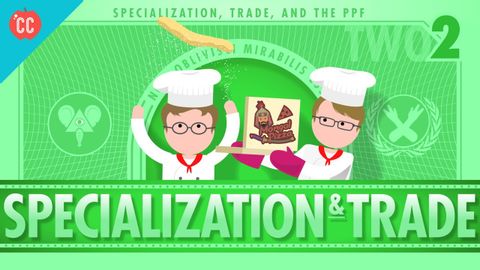専門化と貿易。クラッシュコース経済学 #2 (Specialization and Trade: Crash Course Economics #2)
Jack が 2021 年 01 月 14 日 に投稿  この条件に一致する単語はありません
この条件に一致する単語はありません- v.t./i.突き刺す : 刺し込む;貼る : くっつける;とどまる;突き出す;我慢する
- n. (c.)棒
US /ˌɑpɚˈtunɪti, -ˈtju-/
・
UK /ˌɒpə'tju:nətɪ/
- n. (c./u.)機会;好機;仕事の機会;ビジネスチャンス
US /ædˈvæntɪdʒ/
・
UK /əd'vɑ:ntɪdʒ/
- n. (c./u.)有利な点;強み : 長所;利益
- v.t.利用する
US /ˌkɑmbəˈneʃən/
・
UK /ˌkɒmbɪ'neɪʃn/
- n.コンビネーションロック;組み合わせ;組み合わせ;組み合わせ;結合
エネルギーを使用
すべての単語を解除
発音・解説・フィルター機能を解除

